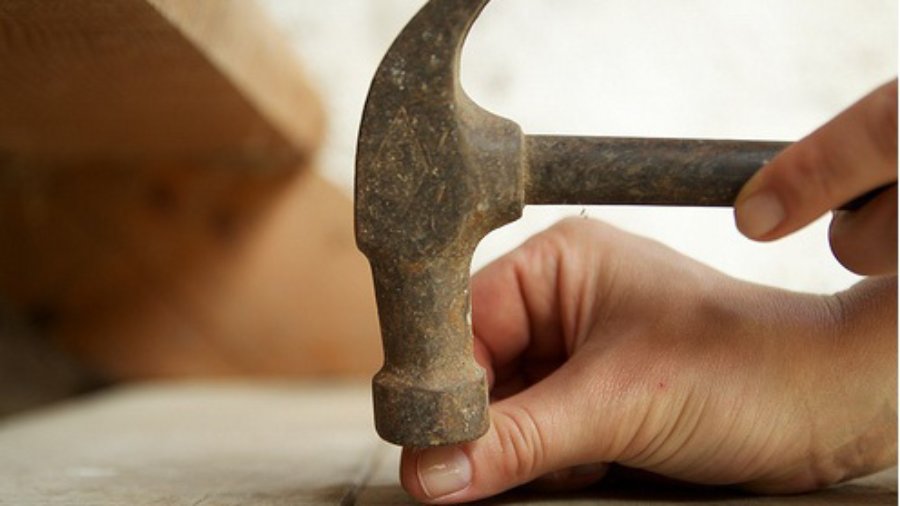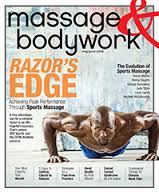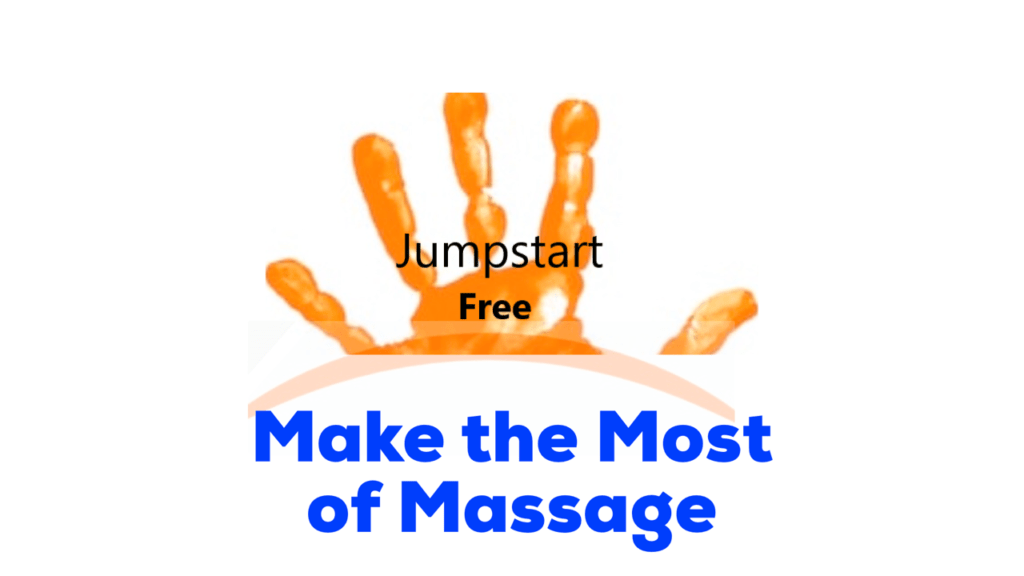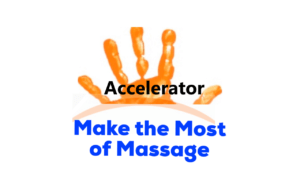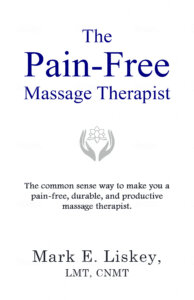Is massage causing you pain? Don’t let it. Here is a way that I’ve found to be super effective in changing the pain game: Recognize and eliminate perpetuating factors.
Save Yourself $5000
You may have read an earlier post of mine—I Saved My Client $5000 (By Using My Most Important Neuromuscular Tool)—where I explain how to help a client get out of pain by eliminating perpetuating factors. I define a perpetuating factor as anything one does (bad work posture to bad decision making) or has (a structural imbalance) that activates, aggravates or prolongs a pain condition.
The same is true for you and me. If we can eliminate perpetuating factors while doing massage, we can stay out of pain.
The trick is to pay attention to the little things. Because the little things can add up to a big reason why you’re in pain.
The Little (But Costly) Perpetuating Factors
I’d like you to meet Chuck. Chuck is a handyman who did work at my mom’s house. He has pain issues. One day Chuck and I teamed up to paint my mom’s basement. Midway through Chuck started to complain about his knees. I looked over and saw that he was kneeling on concrete.
When I suggested rolling up a blanket for a knee cushion, he declined. Later when I saw him using a paint roller on the wall, I noticed that instead of bending from his knees, he was bending awkwardly from his back. (Probably because his knees hurt from kneeling on concrete.)
Guess what his next complaint was about? You got it—his back.
These incidents may not seem traumatic enough to cause Chuck pain, but I guarantee you that Chuck kneels on hard surfaces and bends in a way that’s bad for his back over and over every day. And the cumulative effect is enough to keep him in pain.
Become Aware of Your Pain
Now instead of picturing Chuck in my mom’s basement, imagine you’re in your massage room. If you were able to watch yourself do a massage you, like I watched Chuck paint, you’d probably see yourself doing something (perpetuating factor) over and over that’s activating a pain issue.
You can start to figure out what may be causing you pain during a massage by simply paying attention to when the pain occurs and noting what you’re doing when it happens.
Change How You Do Things
Next, I’m going to ask you to do something a little more difficult. Ready? Stop doing whatever it is that you’re doing when the pain occurs AND think of another way to get the job done.
For example, if your right thumb is bothering you when you start to use it for firm detail work, then try your left thumb. If a thumb starts to bother me in the middle of a glide stroke, I will often switch to a knuckle or a power tool, like a knuckle braced by a fist, or a T-bar.
The key is to get comfortable with as many tools (fingers, thumbs, knuckles, fists, elbows/forearms) as possible. That way you will never run out of options. In this rough-cut, YouTube video—Massage Techniques–Deep Tissue Basics (Tools and Power Tools)—you can see what I mean.
Change How You Think
As your pain area starts to feel better, it will be tempting to stop self-monitoring. Don’t.
My right shoulder had bothered me every since high school football. When I had eliminated a key perpetuating factor, reaching too far during a glide stroke, my shoulder pain disappeared.
But then I got used to feeling good and I reintroduced the perpetuating factor (extending too far when gliding). It didn’t take me long to activate my right shoulder pain again. But this time my other shoulder was bothering me from working out. It was a dicey month or two before I was able get back to the “feeling good” baseline.
It was all absolutely avoidable if I had continued to self-monitor.
Remember Chuck
I know that in other areas of my life I can be Chuck. I think something is unfixable because I don’t have or am not willing to accept the information that will help me.
But when it comes to my body, I can’t afford to be Chuck. Neither can you.
During a massage, note what you’re doing when the pain occurs. Then eliminate the perpetuating factors that are activating the pain issue and find another way to get the job done. Continue to self monitor. Feel better!
My Best Body-Mechanics, Online, CEU Course
A while back I almost quit massage because of pain and injuries.
Then I spent a year revamping my massage to see if I could massage pain-free. That’s where incorporating the lower half of my body into the massage came in along with a bunch of other strategies that ultimately saved my massage career.
I pulled all that first-hand experience together and made a live CEU class which I taught for about 5 years. During those 5 years I listened to the massage therapists taking the course and worked out the learning kinks.
Now I have an online version of the live body mechanics class that will help you massage pain-free.
Check it out here.
